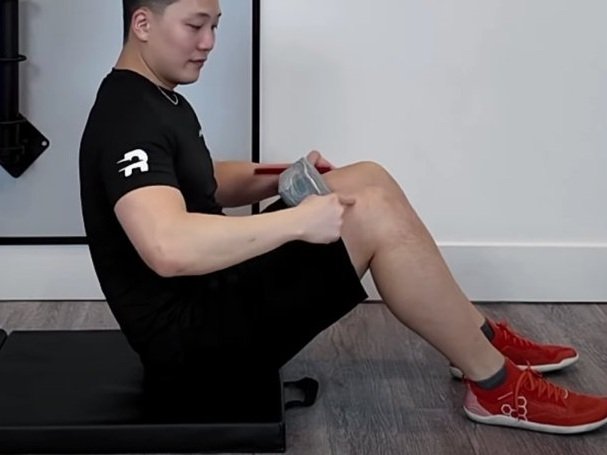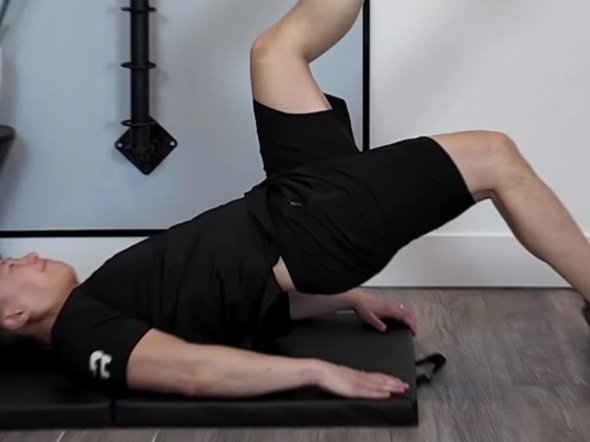Pes Anserine Bursitis
Knee pain in athletes and active individuals
Learn about how pes anserine bursitis might be the cause of your knee pain.
What is pes anserine bursitis?
Pes anserine bursitis is a common condition that causes pain in the front or inner aspect of the knee. Pain is usually experienced either below or above the joint line (unlike knee meniscus pain which is characterized by joint line pain). It is typically caused by inflammation of the pes anserine tendon group which has muscles from the front, inner, and back aspect of the thigh. While pes anserine bursitis can affect anyone, it is most common in active individuals due to the repetitive stress that the knee may be exposed to.
Athletes and active individuals may be more likely to develop this condition as the activities they engage in are more high-impact than those found in activities of daily living. Movements such as running, jumping, squatting, or lunging can trigger pes anserine bursitis pain. This injury is considered to be a repetitive overuse injury which means it typically occurs when training volume exceeds your recovery rate. As a result, these activities put stress on the pes anserine tendon group leading to cumulative microtrauma and inflammation. Over time this can cause the soft tissues to become sensitive to pain and may even swell, leading to pain and discomfort in the knee.
Training volume is something that should be considered in your exercise program, especially if you are new to a particular activity. While athletes who have been training for years may have the strength to do an intense program, beginner and intermediate level athletes will need to consider their current level of physical capacity and the length of time needed to condition their passive tissues (such as tendons, ligaments and joints).
Another risk factor for pes anserine bursitis in athletes and active individuals is improper footwear or foot support. Inappropriate footwear may expose your body to unnecessary stresses and may lead to increased overload of your knee. This may then result in developing pes anserine bursitis. Additionally, shoes that do not give proper support may cause your biomechanics to become inefficient which can also contribute to the development of pes anserine bursitis.
For athletes and active individuals who end up developing pes anserine bursitis there are options available. Relative rest from aggravating activities may be recommended to facilitate better recovery. This may mean temporarily replacing or modifying movements that make the knee hurt (such as doing a box squat instead of a regular squat). Other things such as physiotherapy, stretching, and strengthening exercises can be done to improve overall knee flexibility and strength. In some cases medications may be used to temporarily manage symptoms.
How physiotherapy can help you heal
Pes anserine bursitis is a condition that causes knee pain due to the repetitive strain of three conjoined tendons. The affected tendons include the sartorius, gracilis and semitendinosis tendons which are found in the front of the thigh, inner thigh, and back of the thigh respectively. When any of these three tendons or a combination of these tendons are irritated, knee pain can be felt in the pes anserine. While this can be frustrating as it may interfere with your training or workouts , there are a variety of treatment options available to you to promote healing. One of the most recommended ways is through physiotherapy.
Physiotherapy, also known as physical therapy, is a type of treatment that includes exercise rehabilitation, manual therapy, acupuncture, and other modalities to help reduce pain and improve recovery. For those with pes anserine bursitis, physiotherapy can also help to improve knee strength, mobility, and allow them to resume an active lifestyle.
Through physical therapy you can be helped by learning proper biomechanics, increasing the strength of the affect muscles, and increasing your range of motion. This can be achieved through different motor patterning, strengthening and stretching exercises. A physiotherapist will work with individuals to create a personalized exercise program that targets the specific needs of their lifestyle.
In addition to physical rehabilitation, physiotherapy can also include manual therapy techniques such as deep tissue massage, joint mobilization or manipulation, and myofascial release therapy. These are used to help control pain and inflammation, and to increase local blood circulation. Depending on the circumstance, the physiotherapist will determine if manual therapy is needed and which soft tissue techniques will be best.
A physiotherapist will also help patients with pes anserine bursitis by providing advice on proper footwear. By evaluating an individuals gait, foot mechanics and movement patterns, recommendations on footwear or orthotics may be made to help reduce the risk of developing pes anserine bursitis or recurrence of symptoms.
Physiotherapy may also include modalities such as shockwave therapy, cupping therapy, low level laser or cold laser therapy, or acupuncture to help manage pain. These are used as adjunct treatments to exercise therapy, and may be used in combination to improve the speed of recovery.
Generally physiotherapy is the recommended treatment option for people with pes anserine bursitis. By improve strength of the sartorius, gracilis and semitendinosus muscles, controlling pain and inflammation, and providing patients with education on biomechanics and footwear, a physiotherapist can help to achieve the best possible results. If you are experiencing symptoms of pes anserine bursitis, it is recommended to speak with your primary healthcare provider to determine if physiotherapy is the right treatment option for you.
To book in with a Rehab Hero physiotherapist in Toronto or Markham click the button below.
To learn more about this painful knee condition, feel free to watch this video by Markham chiropractor Dr. David Song.
FAQ
-
The type of footwear that is recommended will depend on the activity will be doing and your personal gait and foot mechanics. Generally speaking, for high impact activities like running or jumping running shoes are needed due to their shock absorption capabilities. To contrast, weight lifting activities will generally need shoes that offer minimal cushion due to the increased stability needed to lift weights. Specialized orthotics compatible with both types of shoes can be made if needed.
-
Depending on the clinic, chiropractors can also assess your knee and provide manual therapy, exercise therapy, and use modalities. Often these types of chiropractors are found in clinics focused on sport injuries or work in collaboration with physiotherapists. It is recommended to call a clinic near you to inquire about treatments used in order to understand their process.
-
A massage therapist may be able to provide manual therapy techniques such as cross friction massage, myofascial release, and deep tissue to help with the recovery of your knee pain. Some are additionally certified to use acupuncture to promote the recovery of your knee. They may also prescribe exercise to rehabilitate you knee.
Written by: Dr. David Song
Dr. David Song is a chiropractor in Toronto that takes an active approach to his care. By educating his patients about how to be proactive about their health, he helps his patients to recover with independence. Outside of the clinic, you can find him lifting weights in gyms across the GTA.























